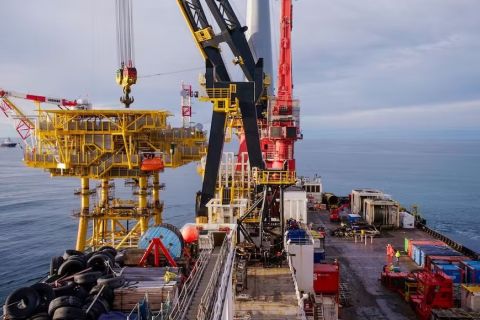French lender Crédit Agricole Group on June 22 set out targets to cut its exposure to the financing of emissions from the oil and gas sector and boost renewable energy lending.
The move comes as the sector faces growing regulatory and investor pressure to align lending with the world's climate goal, aiming to cap global warming at 1.5 C above the pre-industrial average by mid-century.
In a strategy update, Crédit Agricole, the country’s second-biggest listed lender, said it expected emissions linked to its loans to the oil and gas sector to fall 30% by 2030, while those connected with lending to the autos sector would fall by half.
By the end of 2022, the bank said it would publish decarbonization pathways for other energy-intensive sectors including steel, cement, power, commercial real estate and shipping.
Those for agriculture, aviation and residential would follow in 2023, collectively covering 60% of the bank’s credit exposure.
In addition, the bank said it aimed to invest more in renewable energy, growing its portfolio of loans by 65% by 2025 to reach 14 gigawatts, equivalent to the average energy needs of around 5 million households.
While backing the move to set targets for the two sectors, a requirement of Credit Agricole’s membership of the Net-zero Banking Alliance—a group of banks pledging climate action—non-profit Reclaim Finance said more action was needed.
“We welcome Crédit Agricole’s announcement which acknowledges for the first time the need to phase out oil and gas and to complement their 2030 decarbonization targets with measures to immediately reduce emissions in the real world,” said Director Lucie Pinson.
“We call on Crédit Agricole to cement this ambition by becoming the first French bank, as it was on coal, to end direct and indirect support for new oil and gas fields.”
Recommended Reading
US Oil, Gas Rig Count Rises to Highest Since September: Baker Hughes
2024-03-01 - The U.S. oil and natural gas rig count is at its highest since September 2023.
Comstock Continues Wildcatting, Drops Two Legacy Haynesville Rigs
2024-02-15 - The operator is dropping two of five rigs in its legacy East Texas and northwestern Louisiana play and continuing two north of Houston.
Chevron Hunts Upside for Oil Recovery, D&C Savings with Permian Pilots
2024-02-06 - New techniques and technologies being piloted by Chevron in the Permian Basin are improving drilling and completed cycle times. Executives at the California-based major hope to eventually improve overall resource recovery from its shale portfolio.
TotalEnergies Fénix Platform Installed Offshore Argentina
2024-02-13 - First gas from the TotalEnergies-operated project is expected in fourth-quarter 2024.
TPH: Lower 48 to Shed Rigs Through 3Q Before Gas Plays Rebound
2024-03-13 - TPH&Co. analysis shows the Permian Basin will lose rigs near term, but as activity in gassy plays ticks up later this year, the Permian may be headed towards muted activity into 2025.




